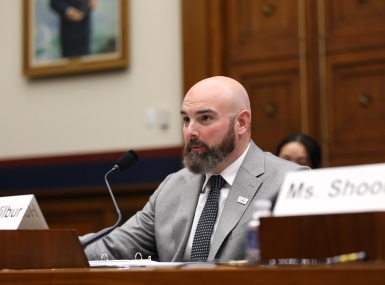Treasury releases updated FAQs on federal Emergency Rental Assistance program
Author
Upcoming Events
Related News

Key Takeaways
On June 24, the U.S. Treasury Department (Treasury) released an updated set of Frequently Asked Questions (FAQs) on the federal Emergency Rental Assistance (ERA) program. The program, which is administered by Treasury, provides direct funding to states and eligible units of local governments, including counties with populations over 200,000, to assist families struggling to make rental and utility payments in the wake of the COVID-19 pandemic. Counties with populations below 200,000 residents may receive an allocation from their state. The updated FAQs provide further clarity on several items to help grantees effectively and equitably administer ERA programs at the local level.
The Consolidated Appropriations Act of 2021, enacted in December of last year, established and provided $25 billion for the federal ERA program. Treasury has now fully distributed this first round of funding for the program, referred to as ERA1. The American Rescue Plan Act (ARPA), enacted in March 2021, provided an additional $21.6 billion for a second round of the program, known as ERA2. As of June 26, the Treasury Department has distributed $6.1 billion of the total ERA2 funding.
As Treasury distributes ERA funding to state and local government grantees, they have continued to update and amend the FAQs guiding program implementation. The most recent revisions to the FAQ are relevant to counties as they continue to stand up and administer ERA programs in their communities and adhere to the program requirements set forth by the Treasury Department.
New FAQs included in the latest update deal with:
- Eviction Prevention: The FAQs encourage grantees to partner with local courts and others to help prevent evictions and develop eviction diversion programs by educating relevant stakeholders about the availability of financial assistance under ERA programs. The FAQs also encourage grantees to engage with legal and other housing stability service providers to assist households facing eviction.
- Outreach and Accessibility: The FAQs state grantees should address barriers that households eligible for assistance under ERA programs may face by conducting culturally and linguistically relevant outreach.
- Data Bundling and Bulk Payments: The FAQs allow grantees to establish data-sharing agreements with utility providers and landlords with multiple units in order to reduce administrative burdens and enhance program integrity. The FAQs also allow grantees to bundle assistance payments for multiple households into a ‘bulk’ payment to a utility provider or landlord.
- Security Deposits: The FAQs state grantees can establish policies around security deposits, including reasonable limits on the amount of a security deposit which can be paid for using ERA funds. The FAQs also state that grantees should establish a minimum rental period of at least four months before a tenant can receive a returned security deposit that was paid for using ERA funds. If a security deposit is not returned to the tenant, it should be returned to the grantee.
Changes to FAQs included in previous versions of the guidance address the following:
- Assisting Families Experiencing Homelessness: The updated FAQs encourage grantees to provide households that do not have a current rental obligation – as is required for assistance under the ERA program – with a document specifying the amount of financial assistance the grantee will pay a landlord on behalf of the household if they enter into a lease of at least six months.
- Working Across Jurisdictions: The updated FAQs encourage grantees with overlapping or contiguous areas to work together on their ERA programs and communicate clearly with the public on the assistance available.
- Landlords Refusing Payment: If a landlord refuses to accept payment from a tenant who has received assistance directly from a grantee, the updated FAQs allow grantees to permit tenants to use their assistance for other ERA eligible expenses.
- ERA2 Administrative Expenses: The updated FAQs clarify that for ERA2, any direct or indirect administrative costs must be allocated by the grantee or the provision of financial assistance, housing stability services and other affordable rental housing and eviction prevention activities.
- Housing Stability Services: The updated FAQs detail additional eligible housing stability services including eviction prevention and eviction diversion programs; mediation between landlords and tenants; and housing navigators that help households access ERA programs or find housing.
- Reporting and Recordkeeping Requirements: The updated FAQs outline new reporting and recordkeeping requirements for grantees. Treasury will provide grantees with additional guidance, and grantees will be required to submit reports in accordance with this guidance beginning with the first quarter of 2021 for ERA1 and the second quarter of 2021 for ERA2, with the first reports being due on July 29, 2021. Further, ERA1 grantees will be required to submit monthly reports for June, July and August of 2021, which should be similar to the monthly reports that were required for April and May 2021.
NACo will continue to work with Treasury to advocate for county priorities as the Department develops es guidance around the ERA program. If your county has established an ERA program and you would like to have it featured on the NACo website, please email ERAP@naco.org.
Additional Resources
Resource
Emergency Rental Assistance Resource Hub for Counties

Related News

NACo testifies before Congress on brownfields revitalization
On May 7, Oswego County, N.Y. Clerk Terry Wilbur testified on behalf of NACo before the U.S. House Subcommittee on Water Resources and Environment at a hearing titled “Cleaning Up the Past, Building the Future: The Brownfields Program”.

County’s groundwork helps set the stage for energy breakthrough
Amid the high-level work that put groundbreaking geothermal energy projects into Beaver County, Utah, the local work has been crucial to making the endeavors a success.

North Carolina county shell building program draws new businesses
Nash County, N.C. invites potential new businesses to see themselves and their operations in large shell buildings the county erects in its business parks.
